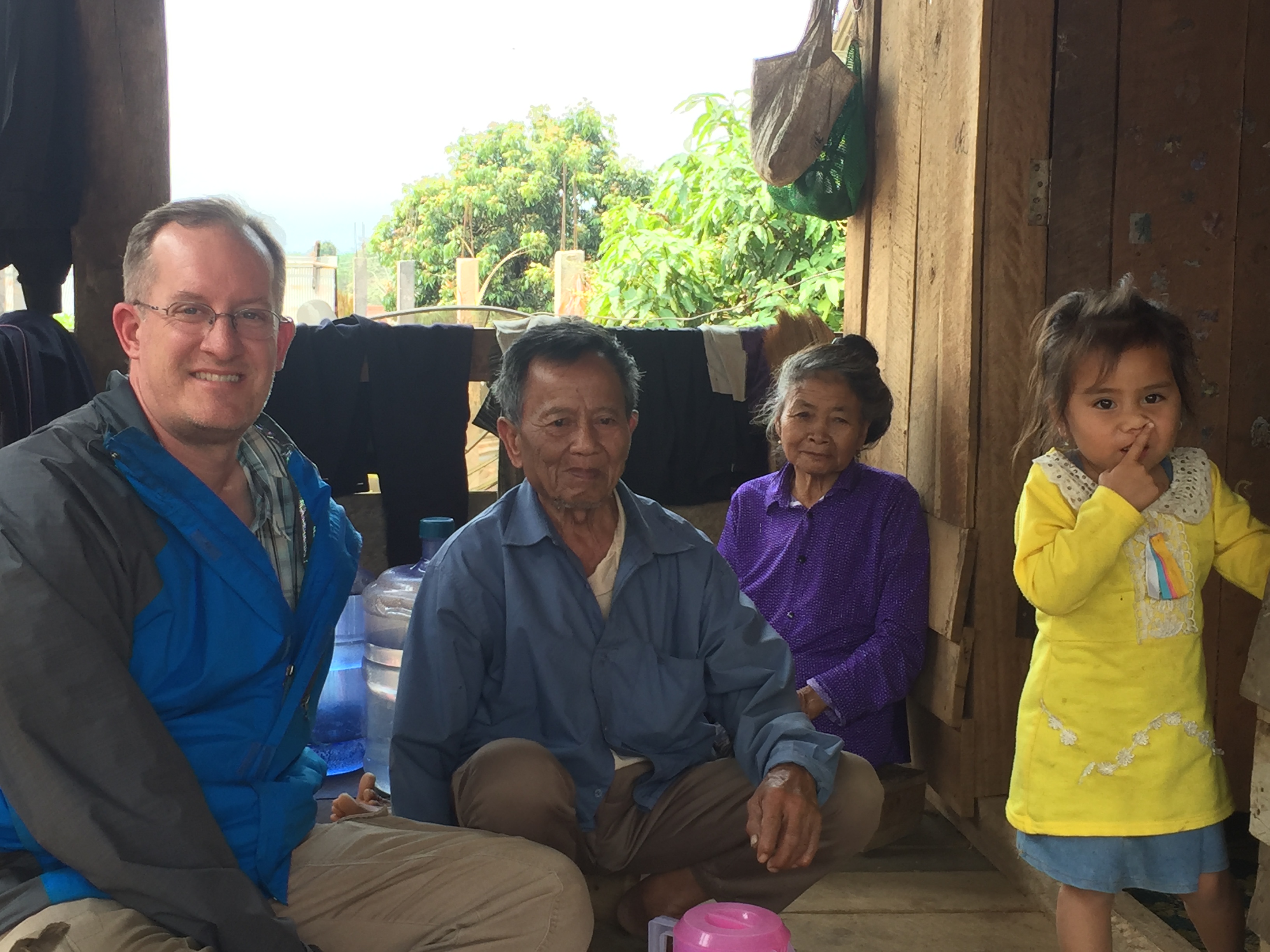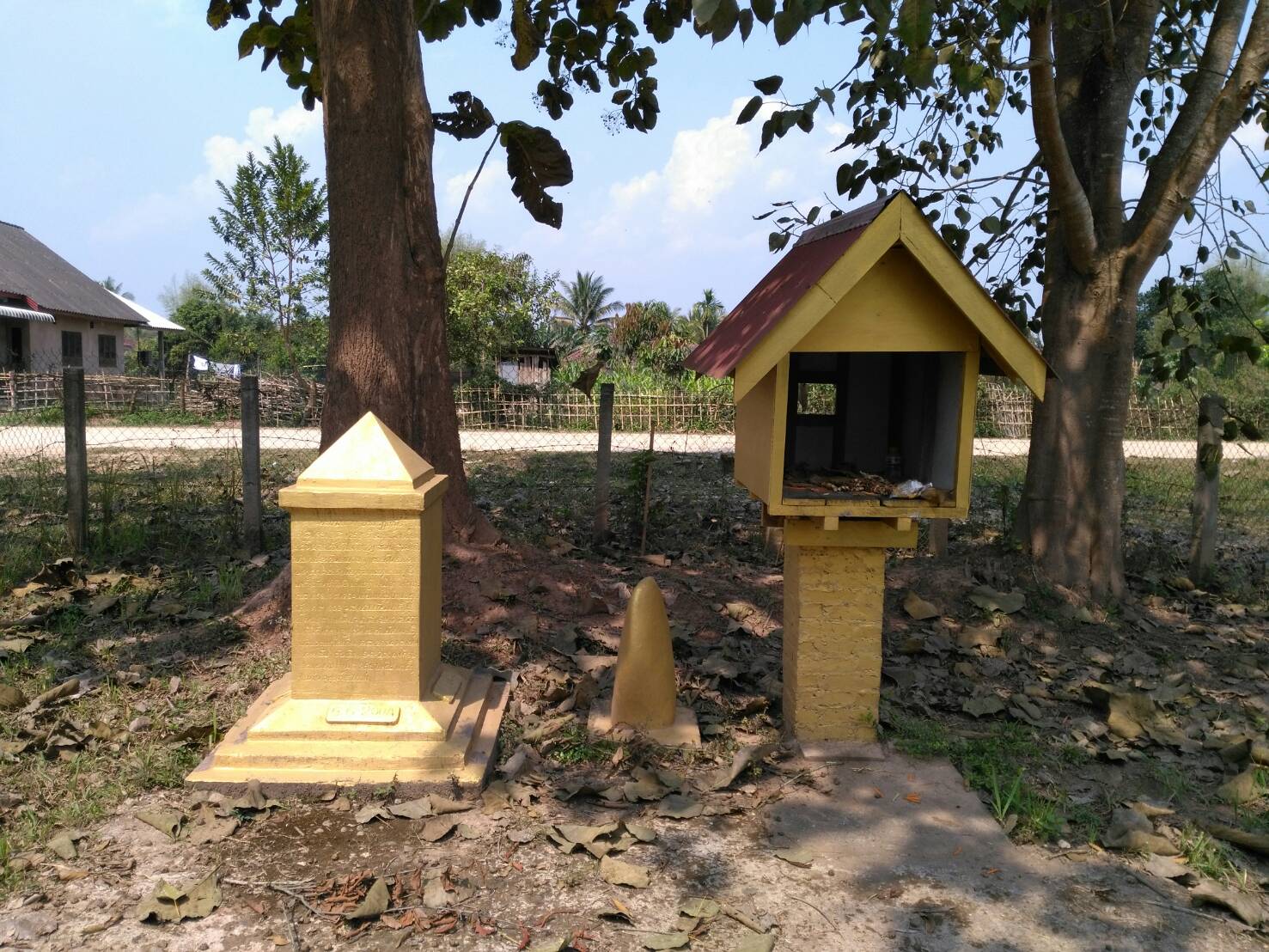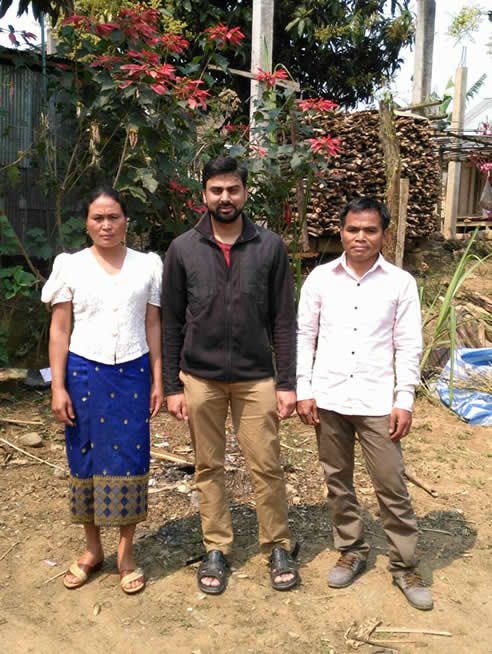As a JSPS Postdoctoral Fellow whose research primarily focuses on India, I have always felt as a slight outlier at the CSEAS, where most research focuses on Southeast Asia, which as broadly conceived stretches from the Philippines to the Bangladesh- Burma border. Although I am the only researcher at CSEAS as far as I know working primarily in India, my research focuses on India’s Austroasiatic languages, minority languages which are closely related to the Mon-Khmer languages of mainland Southeast Asia. My postdoctoral counterpart at CSEAS, Nathan Badenoch, has worked for a number of years on Mon-Khmer languages, particularly in the Laos highlands, and also in Myanmar, and recently we together have begun joint projects in India as well.
Since Southeast Asia is not my area of study, I have not spent much time in the region. Yet one of the advantages of working at CSEAS has been the opportunity to explore regions different from my primary research site, and to explore the longstanding connections between different parts of Asia (Japan included). Recently I had the opportunity to accompany Professor Badenoch on a trip to his field site in Luang Namtha province, Laos, a region far to the north of the country that shares a border with Yunnan in China. This region is both ethnically and linguistically diverse, home to several of Laos’ ethnic minorities. In the villages around Luang Namtha, speakers of four major language families (Austro-Asiatic, Hmong-Mien, Tibeto-Burman, and Tai-Kadai) coexist together, and a type of stable multilingualism has emerged. Badenoch has been studying the languages and the linguistic and ethnic diversity of this region for over eight years, and is proficient to varying degrees in many of the languages spoken there.
Currently, Badenoch is working mostly with a settlement of speakers of a Mon-Khmer language known as Bit. As the language is under-documented, Badenoch is in the process of creating a dictionary and grammar of the language. I accompanied him to the Bit village in February 2018 for a brief visit. As the villagers could talk freely in their language (through Badenoch), they were very friendly and open with Center for Southeast Asian Studies Kyoto University 039 Fig. 1 Associate Professor Nathan Badenoch discussing Bit history with village elder me. They readily answered questions I had about their language, and I drew many comparisons between words and cultural concepts in their language and in the Austro-Asiatic languages spoken in India. They were equally surprised by the close similarities in languages spoken so far apart.
However, perhaps more interesting than my academic questions were the villagers’ own questions for me, having for the first time seen a person of Indian descent in the flesh. “Do you see many snakes in India?” “Are you scared of snakes?” “Are snakes in India magical?” “Are India people’s origins from snakes?” At first I was a bit confused why so many villagers, at most of the households we visited, kept asking me questions about snakes. I know India was famous for cobras and snake charmers, but it is also equally known for many other things, so I was curious why the intense curiosity of everyone on the subject of snakes. It soon emerged in conversation with the villagers that one of the most popular television shows in the village was a Thai-dubbed version of the Indian drama Naagin (นาคิน in Thai).

Fig.1 Associate Professor Nathan Badenoch discussing Bit history with village elder
Naagin was a popular Indian television drama that first aired in India in 2015. The story is one of twoshapeshifting serpent cousin sisters (icchadaari naagin) who seek to avenge the death of their parents. Their parents possessed an ancient powerful jewel, and were murdered by a gang of thieves. The sisters were then raised in a Shiva temple (Shiva is a powerful Hindu God, and Lord of Serpents) by a holy man (a rishi or sage), and then as they grew older they left to kill the thieves and regain possession of the jewel. Subsequently a series of events take place, for instance the sisters both fall in love with one of the kind-hearted human sons of one of the murderers, and turn on each other, leading to family and romantic dramas and tensions between serpent and human forms. Though the story has mythological and Puranic elements it is set in the modern world; the characters use mobile phones and drive cars, while at the same time using religious incantations, casting curses, etc.
The show was one of the first Indian television dramas to air on Thailand’s Private Channel 3, and because, as is typical with many Indian television dramas, a large number of episodes were produced, it was available as a daily broadcast. As most people in Luang Namtha had satellite dishes they received Thai television channels, and as a general rule, most people in Luang Namtha (and in Laos in general) preferred watching Thai-language media. As we found out later, not only in the Bit village, but throughout Luang Namtha town and the surrounding cities, Naagin was extremely popular. Everybody either watched it, or expressed regret at not having time to watch it. On my way back from the Bit village to Luangnamtha city after a day of field work, I passed by an open window and peeked inside, and I saw a television show lighted up with two snakes fighting with a Shiva linga (a statue of the Lord Shiva) in the background, and one of the snakes quickly morphing into a beautiful woman. The show of course was Naagin.

Fig.2 Rishi and the Buddha (Photo from Nathan Badenoch)
As Badenoch took me around Luang Namtha and explained to me more in depth about the history and cultural diversity of the place, I started to see that the themes and characters of the Indian television show had a far deeper local resonance than simply as an exotic curiosity from a remote land. Communities like the Bit, and other larger ethnic groups in the region like the Khamu and Sida, were not Buddhist but practiced forms of animism in which animal spirits were important, including snakes, and spirits often took the forms of both animals and humans. Snakespirits, called Naak (from the Sanskrit Naga) often shape-shifted into women. Hence it was no surprise that among animist communities like the Bit, shows like Naagin were popular, and though they were “supernatural,” resonated with lived experience. The Naga of course, as a popular creature from ancient Indian mythology, also plays a special role in Buddhism, the dominant religion of Laos.

Fig.3 Shiva linga in the monument about the founding of the valley (Photo from Nathan Badenoch)
Yet though shape-shifting snakes have parallels in the Buddhist and animistic worldviews of the residents of Luang Namtha, there are also some other more obscure connections that came to light during my brief trip. For instance, Naagin features bearded ascetics, holy men who, in India, are often associated with the worship of Shiva. Anyone who has visited the Himalayas in India or Nepal, or any number of pilgrimage sites in South Asia, has seen these wandering ascetics, and thus they are not so exotic for the Indian viewer. They are however a rare sight in the Theravada Buddhist cultures of Southeast Asia, which does not encourage such type of renunciation. Yet, curiously, as Badenoch pointed out to me on a trip to Luang Namtha’s major Buddhist temple, Wat Samakhixay, one of the major features of the temple is a cave-like structure in the back of the main sanctuary at the end of which sits a bearded renunciate (a rishi, drawn from the Sanskrit word for sage or seer) surrounded by Buddhas. Badenoch’s analysis (in an article currently under preparation for the Journal of Lao Studies) is that the sage represents the animistic, non-Buddhist cultures of the region, and that the cave itself with the Buddhas standing in subordination, reverses the traditional power relations between the highland animistic societies such as the Bit, Khamu, or Hmong, and the dominant Buddhist Lao and Tai cultures. This is also evidenced by the fact that many of the patrons of the temple are non-Buddhists.

Fig.4 The next generation in Bit cultural transmission
In addition to the presence of bearded ascetics in the landscape of Luang Namtha, and its connection to the minority cultures of the region, there are also traces of the ancient worship of Shiva. Before arriving in Luang Namtha, I had seen evidence for the worship of Shiva only in the ancient royal centers of Southeast Asia, such as at Angkor or My Son. Hence, I was led to believe that this Puranic strata of worship was only an elite practice, and therefore easily replaced by Theravada Buddhism. While this may in some sense be true, I saw that at Luang Namtha, when the Buddhist Nyuan came from the Chien Mai region to settle the region they built a small structure to mark the founding of Luang Namtha town. There, they also placed a lak-muang (or city pillar) in the shape of what Badenoch considers to be a Shiva linga, a statue to Shiva. These monuments, in combination with the popularity of shows such as Naagin which related the stories of snakes and the power of bearded sages and interventions of the god Shiva on the snakes’ behalf, formed a spectrum of Indic influence that spanned both the ancient and the modern, and revealed possible connections between the animistic life-ways of the region and Indic mytho-poetics that are not attributable to dominant Buddhist worldviews.
Finally, talk about Naagin also brought to light the larger history of Indian media in the region. For instance, during a long five-hour lunch at the Bit village, which included several bottles of Lao beer and some buffalo sashimi, Badenoch reminded his Bit friends how in one story he had recorded one of the older gentleman recalling the unbelievable beauty of the heroine as “the top beauty of all India.” Badenoch said he was surprised as to why the narrator brought up specifically “Indian” woman as a standard for beauty. However most of the villagers understood immediately that the narrator was referencing Indian film actresses. They said that in the 1980s and 1990s, before television sets or satellite dishes streamed Thai television into the homes of villagers (and Thai-dubbed Indian television) the only exposure to cinema was traveling film shows which showed primarily Indian movies. Villagers would spend hefty sums to go see the movies, and would recall songs and dance scenes and of course the “beauty” of the actresses who graced the screen. Thus Indian cinema itself has a longer history than one might expect in the Laos highlands, and for many, it was the first exposure to televisual media. In a time of satellite dishes, and endless television programming streaming from the Bangkok-based channels, the popularity of the Indian show Naagin brings forth an interesting, little discussed history of cross-regional connections both old and new.
